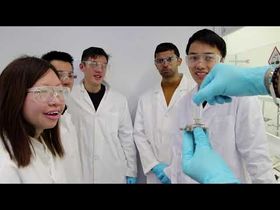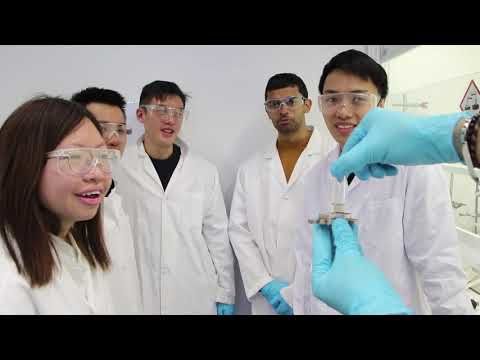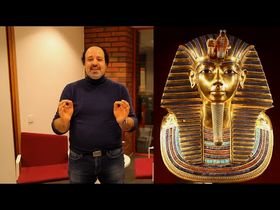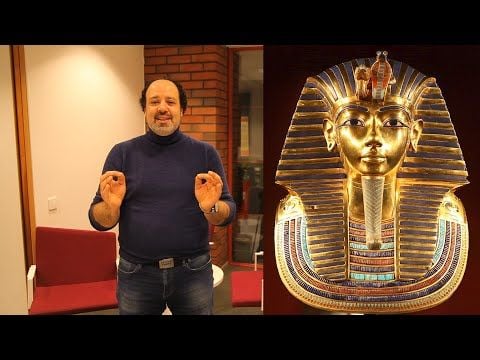Nanochemistry and Nanoengineering
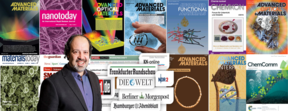
Key research areas:
-
The Leidenfrost Chemistry
-
Bio-Nanoengineering
-
Functional Bio-Nanocomposites
-
Plasmonic and Photonic devices based on ultrathin metasurfaces
-
Functional Electrospun Nanofibers for advanced applications
Utilizing wet chemistry e.g. the Leidenfrost technique, electrospinning, physical vapor deposition, biogenic approaches and a combination thereof, we devise advanced nanomaterials as neat and composite. Such multifunctional materials are exploited for energy saving, advanced coating, plasmonic and photonic metasurfaces, water purification e.g. via solar irradiation as well as sensing and nanomedicine. Our works are interdisciplinary and thus multi-institutional and on an international scale.
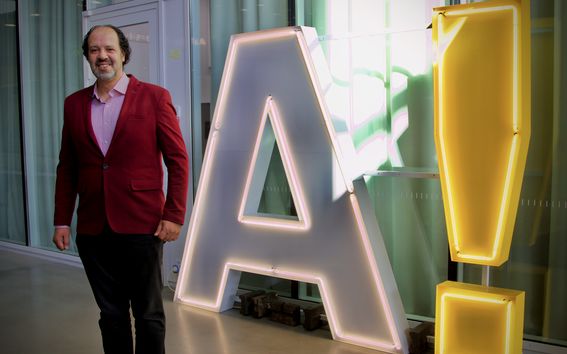
Mady Elbahri, 2018When Science meets Education, it reveals an Aha effect!
Brief about the research topics:
1) The Leidenfrost chemistry:
The hydrodynamic chemistry at the Leidenfrost condition is utilized as a novel and unique nanochemistry discipline. In this area of research, we focus on the production of nanoparticles of different materials (metals, metal-oxides, and bio-minerals) in different sizes and morphologies. For this sake, we have established a novel green nano-synthesis approach, which is fast, cost-effective and simple, to produce large quantities of quasi-monodisperse particles in a controlled manner. Our aim has been an environmentally friendly fabrication of nanoparticles for potential applications of catalysis, photonics, sensing, and biomedicine.
-
New directions: The self-organized mesostructures have great potential for energy storage and conversion applications. In this regard, electrocatalysts with tailored morphology, size and composition can open up a new pathway to enhanced, selective electrochemical conversion with respect to CO2 reduction, water splitting, O2 reduction, etc.
2) Bionanoengineering:
The ability to control the fine structure of materials on the nanoscale provides an unprecedented opportunity to develop new and improved biologically active materials. At this level, human cells, as well as microorganisms, can interact with materials on their own terms, i.e. they can manipulate themselves mechanically around nanostructures or interact with them chemically through individual biomolecules.
We explore these phenomena progressing at the bio-nano interface to develop new technologies and devices for recognition (biosensing), prevention (antimicrobial agents) and therapy. Our research has several main facets: 1) studying the effects of nanoparticles’ size and morphology on the cellular uptake for direct therapeutic effects as well as for drug delivery, and 2) using nanoengineered materials for rebuilding or augmenting human tissues, through tunable cellular growth on surfaces and for killing harmful microorganisms.
3) Functional Bionanocomposites:
Nature has a wide variety of fascinating and unique structures and functions that are worth learning from and applying their principles in an artificial manner. Bioinspired synthesis of nanomaterials is an attractive field for nanochemists. Recently, there has been an increased interest in the synthesis of nanocolloids and bionancomposite systems in a biomineralization-like fashion. However, making such hybrids in a controlled manner and on a large scale has yet to be explored thoroughly. Mimicking the bio-functions is our ultimate goal. We are interested in understanding some of the basic principles of biological architectures to mimic their structure and function. This comprehension is vital in the design of hierarchical, multifunctional bio‑nanocomposites with tailored smart responses.
4) Plasmonic and Photonic devices based on ultrathin metasurfaces:
Solar energy is more favorable than any other source of energy because it is clean and inexhaustible. In the field of plasmonics and photonics, much attention has been paid to the novel approaches of concentration and manipulation of light to improve the absorption and/or transmission of optical devices. Such devices are urgently needed for a wide variety of energy applications ranging from transparent electrodes and energy-saving windows to solar energy absorbers, thermoelectrics, and photovoltaics.
- New directions: Plasmonic metamaterials based on hybrid metal/metal oxide are artificial structures with exotic electrocatalytic properties coming from their plasmon resonances and energy transferability. Recently, these topics have attracted the attention because of their great potential for energy. In our research group, we are dealing with the mentioned concept for both thermal energy harvesting and developing photo-assisted electrocatalysts for energy conversion and environmental applications such as water splitting and CO2 electroreduction.
5) Functional Electrospun Nanofibers for advanced applications:
The electrospinning technique is a well-known process for making continuous sub-micron to nano-size fibers in a nonwoven mat form. Such thin fibers provide unexpectedly high surface area to volume ratios and are of interest for many applications ranging from textile to composite reinforcement, biomaterials, membranes, and sensors. As a result of their high interconnected porosity (>90%) and tunable pore size, electrospun nanofibrous mats show an extraordinary permeability and selectivity thereby a very high potential for filtration applications as a membrane. In our group, we aim to develop functional electrospun nanofibrous membranes for a diverse range of applications including water treatment and gas filtration.
- New directions: Mesofibers with unique 3D morphology and high surface area to volume ratio are unique structural elements for energy and sensing applications. Such characteristics enhance the catalytic properties and offer a higher sensing efficiency. In our group, we are working on developing and designing mesofibers for CO2 capture and conversion into more economical products such as alcohols. Furthermore, we are aiming to utilize these high surface area mesofibers as a support material for different types of catalysts in various applications such as energy conversion and sensing applications.
Related videos:
Related news:
The German Society of Material Science awards Professor Mady Elbahri the DGM prize of 2020
The Deutsche Gesellschaft für Materialkunde e.V. (DGM) has recognized Professor Mady Elbahri at the School of Chemical Engineering, for his outstanding scientific achievements in the field of Nanoscience and nanotechnology.
A novel approach to construct a highly active and durable nanocatalyst offers solutions to energy storage problems
A green, simple and easy method opens up new possibilities for MOF-based nanocatalysts.
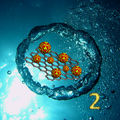
Plasmonic biosensors enable development of new easy-to-use health tests
A biosensor developed at Aalto University enables creating a range of new health tests similar to home pregnancy tests.
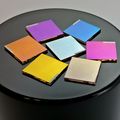
Researchers create anticancer nanomaterials by simulating underwater volcanic conditions
The novel method enables making nanoclusters of zinc peroxide in an environmentally friendly manner.
The Team
- Dr.-Ing. Shahin Homaeigohar
- Dr. Abdou Hassanien
-
MSc. Abdul Rauf Jamali
-
Assistant Prof. Rania M.A. Khalil
-
MSc. Muhammad Usman Saleemi
-
Dr. Ahnaf Usman Zillohu
-
Dr. Mehdi Keshavarz Hedayati
-
Prof. Dr. HalaJ. El Khozondar
-
Dr. Mohammad Rakibul Kabir
-
MSc. Babak Mozooni
-
MSc. Mojtaba Javaherirahim
-
MSc. Ali Tavassolizadeh
-
MSc. Mohammad Jamali
-
MSc. Usman Ilyas
-
MSc. Nabeel Ahmad
-
MSc. Maria Kassab
-
Dr. Seyed Mostafa Enayat
-
MSc. Claudia Tillack
-
Qaisar Latif
-
Maik Teresa
-
MSc. Bastian Gothe
-
MSc. Fabian Schütt
-
MSc. Tahsin Rahman
-
MSc. Jan-Hendrik Pöhls
-
MSc. Botcha Niharika Krishna
-
MSc. Jonaas Ryssy
-
MSc. Muhammad Talha Munir
Join us!
Nanochemistry and Nanoengineering Group is always open to multidisciplinary collaborations and welcomes students whom are willing to become the future game changers! For more info please contact Mady.elbahri(@)aalto.fi
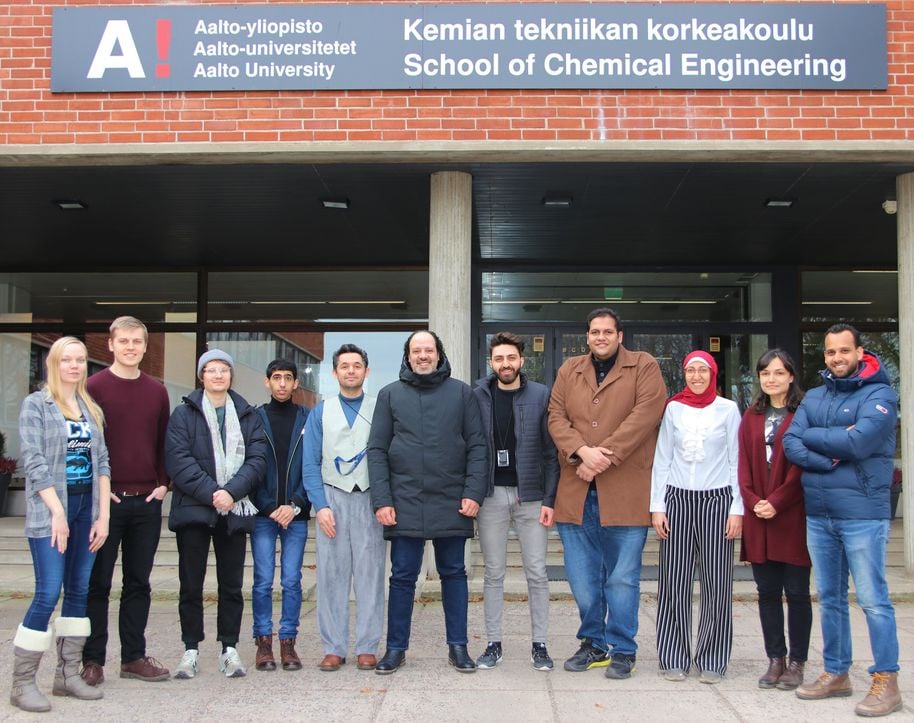
Latest publications
Carbon Aerogels Derived from Anion-Modified Nanocellulose for Adaptive Supercapacitor Performance
Co-sputtering of A Thin Film Broadband Absorber Based on Self-Organized Plasmonic Cu Nanoparticles
Antiviral polysaccharide and antiviral peptide delivering nanomaterials for prevention and treatment of SARS-CoV-2 caused COVID-19 and other viral diseases
Biosynthesis of Zinc Oxide Nanoparticles on L-Carnosine Biofunctionalized Polyacrylonitrile Nanofibers; a Biomimetic Wound Healing Material
Electrochemical Sensitization of Activated Carbon by Microporous MOF for Supercapacitor Applications
Microporous MOF as nanogen facilitating diffusion-coupled charge transfer near the percolation threshold in a polyaniline pseudo-supercapacitor
A thin-film broadband perfect absorber based on plasmonic copper nanoparticles
Nanocomposite with Polarizonic Reflective Coloration: from Fabrication to Function
Mechanical and tribological properties of WO2.9 and ZrO2 + WO2.9 composites studied by nanoindentation and reciprocating wear tests
Reflective Coloration from Structural Plasmonic to Disordered Polarizonic
- Published:
- Updated:
